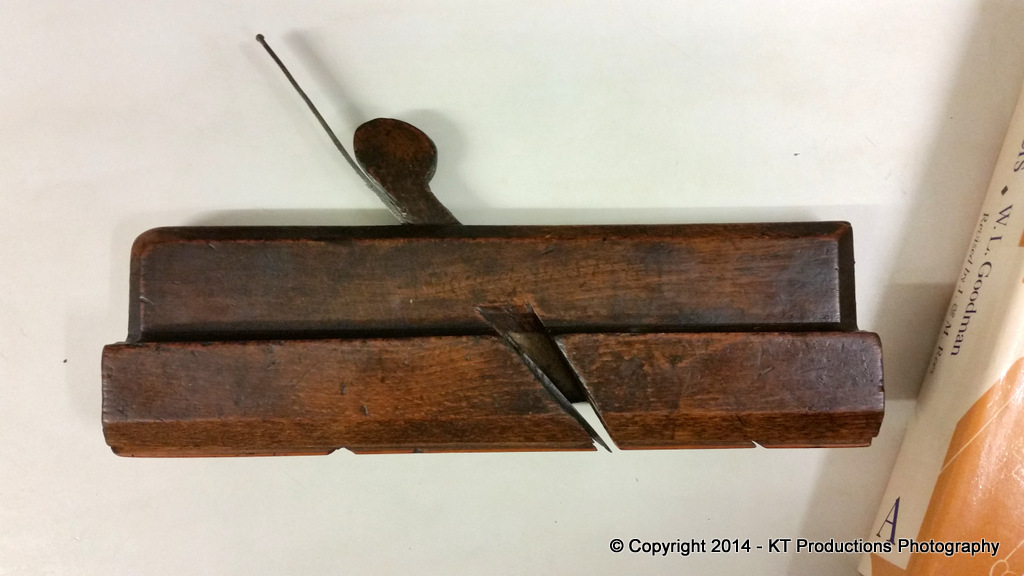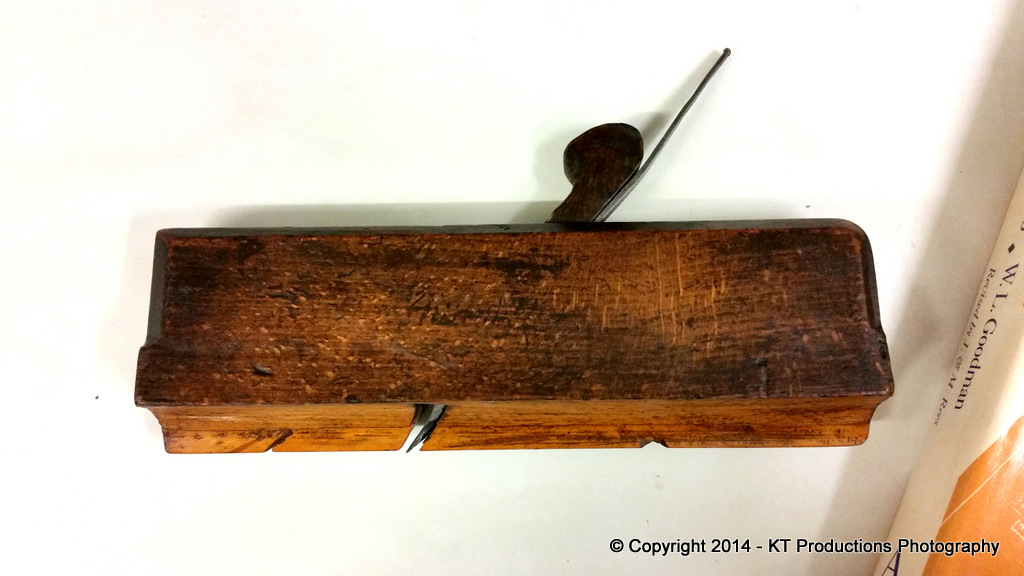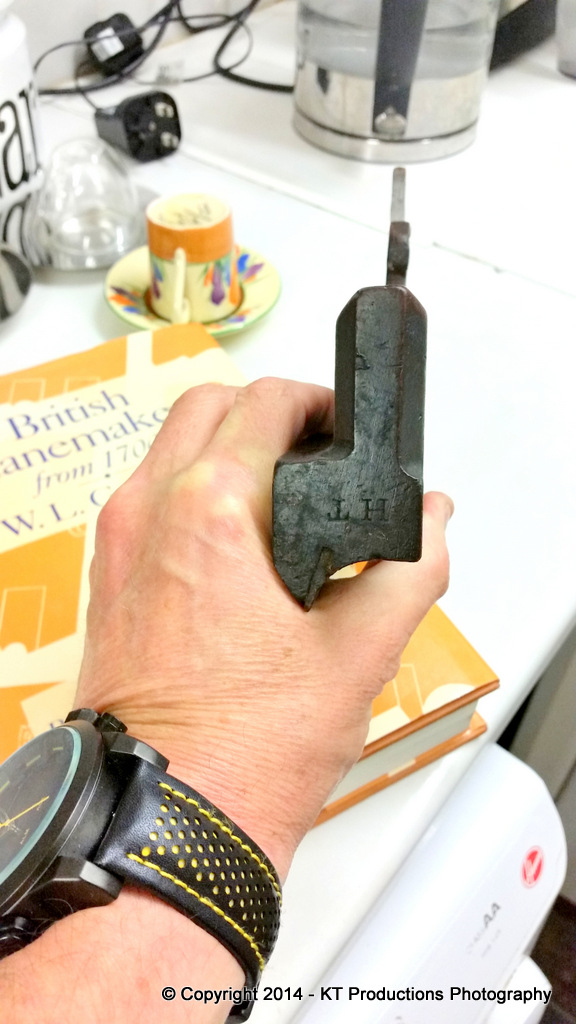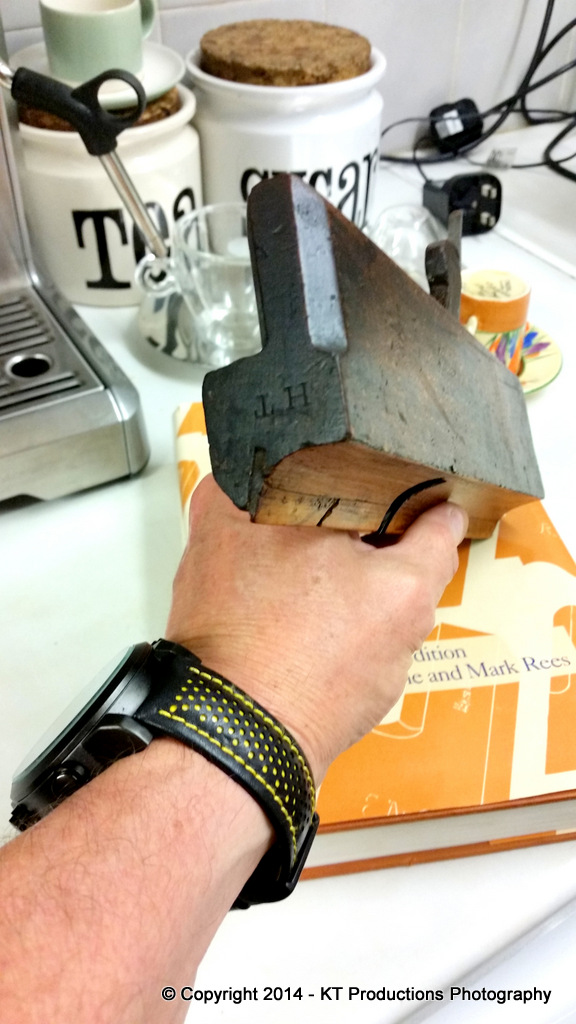jimi43
Established Member
Hello guys.
I found this little woodie at the Detling Antiques and Collectibles Fair on Sunday when I was wandering around looking for a desk for my daughter....

It's the bog standard 9 1/2" and in fairly good nick with a few boxing chips..

....and a nice bit of flower on the side.
This is the profile...

No maker's mark unless someone tells me that the upside down "HT" is the maker and not the owner but not the standard place to put a mark.

The reason I bought it and the subject of my post here today is that I found it an unusual profile and I couldn't recall it being in BPM III....and this proved correct...it's not in there as a standard "type" of wooden moulding plane.
So my questions to you experts are:
1) What's it called?
2) What's would it have been used for?
3) How old is it likely to be...my guess is early 1800s?
4) And lastly...is H T the maker or the owner?
Any help with this would be much appreciated.
Cheers
Jimi
I found this little woodie at the Detling Antiques and Collectibles Fair on Sunday when I was wandering around looking for a desk for my daughter....

It's the bog standard 9 1/2" and in fairly good nick with a few boxing chips..

....and a nice bit of flower on the side.
This is the profile...

No maker's mark unless someone tells me that the upside down "HT" is the maker and not the owner but not the standard place to put a mark.

The reason I bought it and the subject of my post here today is that I found it an unusual profile and I couldn't recall it being in BPM III....and this proved correct...it's not in there as a standard "type" of wooden moulding plane.
So my questions to you experts are:
1) What's it called?
2) What's would it have been used for?
3) How old is it likely to be...my guess is early 1800s?
4) And lastly...is H T the maker or the owner?
Any help with this would be much appreciated.
Cheers
Jimi




